The reason you are here is because you want to make your own pistol holster. By literally taking things into your own hands you can save money, add features, or further simplify to your liking. For my purpose, I chose to use Kydex, a thermoform plastic, due to its great retention and ease of forming. It also does not absorb water or sweat, providing another protective layer to your firearm to ensure it functions properly when it’s critically needed. The second-most popular holster material is leather, but the holster-making process with it looks very different, so we’ll save that guide for another day.
The gun that I’ll be building the holster for is a 5th generation Glock 43, my method will work for any number of guns. I’ll be making an IWB (inside the waistband) holster, but the same method can be applied to an OWB (outside the waistband) holster or alternative. Also, please only work on unloaded guns for your own safety. Verify that your weapon is unloaded before following these steps to make your holster.
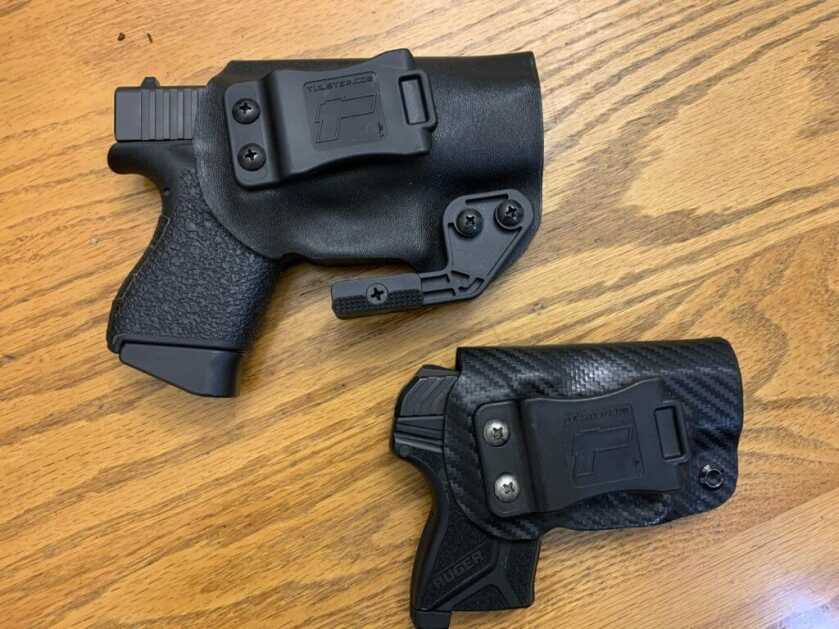
Step 1 – Acquire the materials
Some standard hardware that goes into a Kydex holster includes a belt clip, Chicago screws, rubber washers, and sometimes, a holster claw (which I chose to use in this instance). Oh, and don’t forget the Kydex! All of these can be bought from any number of places. I found all of them on Amazon. Here are the links:
Kydex Sheet (0.080”) – $9.99
Tulster Holster Quick Clip – $5.99
Modwing Holster Claw – $9.99
1/4” Chicago screws (10 pk) – $7.99
Total Price: $33.96
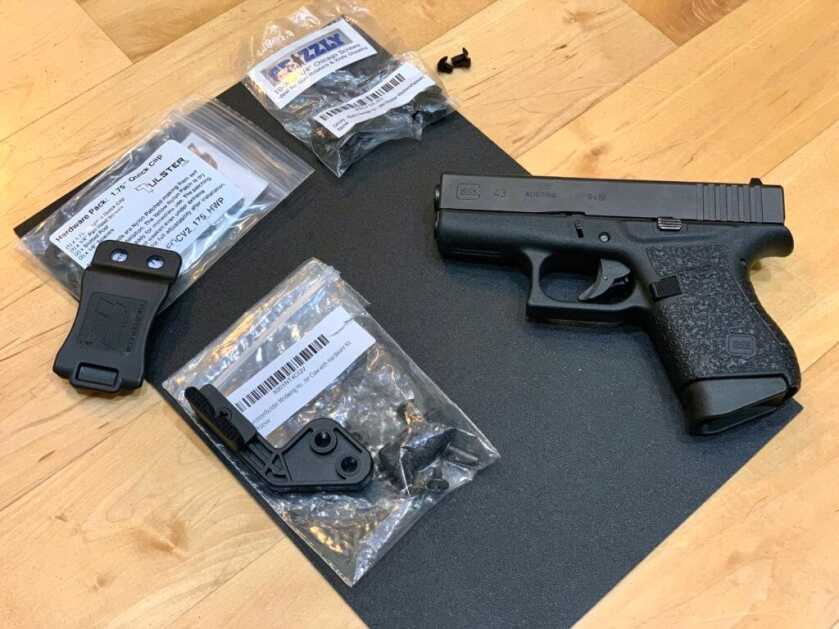
Step 2 – Prepare the firearm
Again, verify that the weapon is unloaded. Now we can start adding spacers to the gun. First, I like to add a spacer that will keep the holster screws from coming into contact with the gun. You can use any number of common household items for this purpose: sticky notes, bookmarks, a scrap piece of leather, etc… I chose to use a cut-up framing pencil because it happened to be about the right dimensions before I modified it.

First, I marked the length of the clip on my pencil. Then I used a knife to score it and break it to the correct length. Afterward, I compared the screw head to the depth that the pencil would provide space for. Seeing that I had plenty of space to work with, I whittled the pencil down to 2/3 of its original thickness and contoured it to the handgun at the place that I wanted my clip to sit.
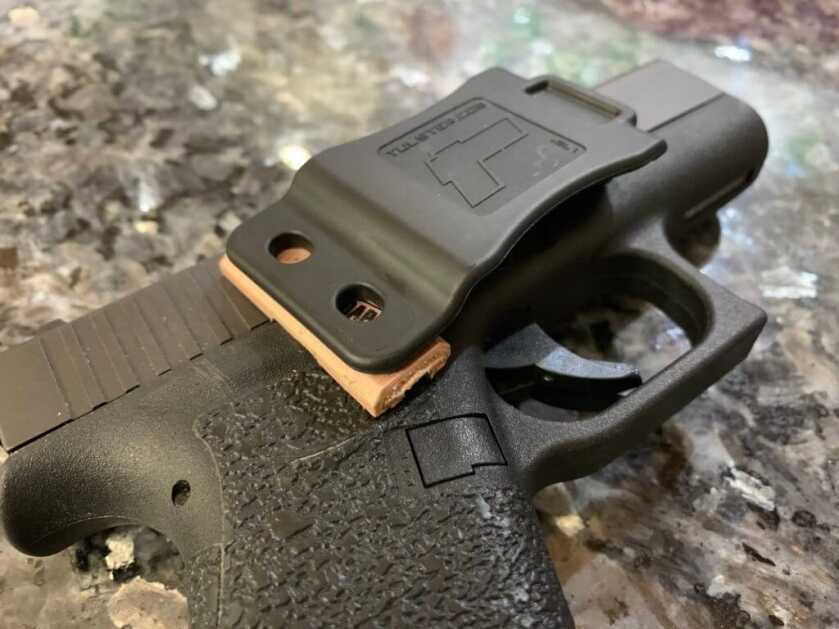
Now tape the spacer onto the desired position of the clip on the handgun. Typically, this is somewhere in-between the grip and the rear of the trigger guard. Try moving it up and down to see what you like the most, as it will alter the depth that your gun is carried.
Once that is done, you will want to add a bridge of sorts between your front and rear sights which will form a tunnel for the front sight to slide down as the gun is slid into the holster. Again, I chose to use a pencil for this purpose because it’s what I have. I made a notch on the pencil for it to sit a bit lower on the front sight and then I taped it into place, as seen below.
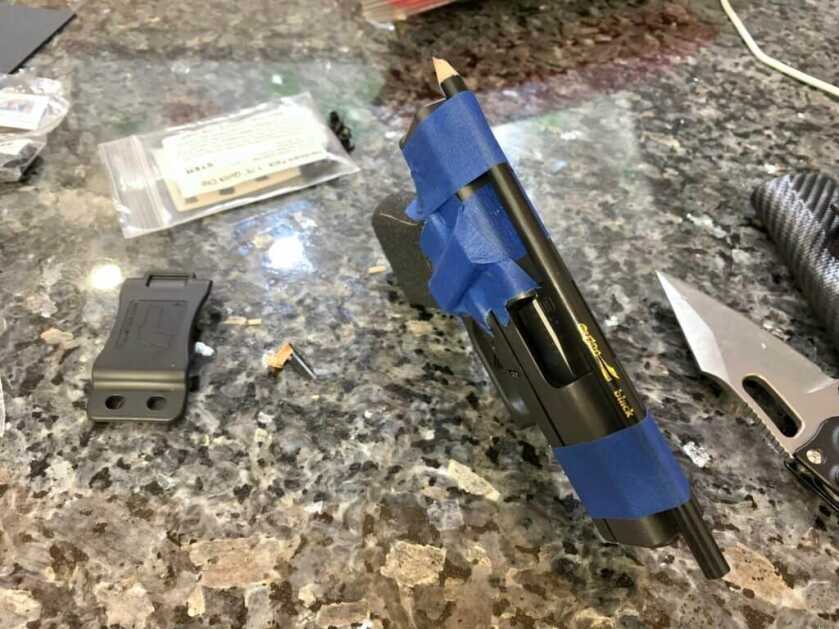
Finally, I like to also add a spacer under the slide, and in front of the trigger guard to form a gap for the rubber washer to sit, allowing you to adjust the tension of the holster on your handgun with a simple turn of a screw. I did this by taping a piece of cardboard into place, as shown below.


Step 3 – Prepare to press the Kydex
You will soon be heating Kydex and molding it to your prepared firearm. Before you can do this, you will need to get out a good pair of leather gloves so you can touch the hot Kydex, a soft and heat resistant surface to press the gun/Kydex inside, and two hard and flat surfaces to do the pressing with. I chose to use a couple of oven mitts to press the gun in-between. These were just compliant enough that they would conform to the gun’s contours, but would also apply the desired pressure to the Kydex that would press it tight to the gun. I also used a sturdy cutting board and a Biology textbook from my undergrad – which sufficed as a “hard surface” for those years as well as the present.

Step 4 – Form the Kydex
For this step, you need heat. But not too much heat! I chose to use a heat gun to bring my Kydex sheet to a moldable temperature. However, you can use another appliance that (dare I say) everyone has: the oven. This thermoform plastic has a melting point of around 300 degrees Fahrenheit, so preheat the oven to around 330 degrees and let it bake until it is limp and moldable. Do not exceed temps of 400 degrees or you risk damaging the plastic. Properly heated Kydex will not damage your firearm, so don’t worry about that.
Now fold the heated Kydex over the gun’s slide with the excess hanging off toward the magazine well. Then place this plastic sandwich inside your press and apply pressure. Wait a minute or so for the Kydex to cool enough to retain its shape.
Once cooled, examine the Kydex and how it took shape to your gun. If any major issues are seen, simply remove the handgun and reheat the Kydex to attempt again. If any small imperfections are found, simply re-heat that spot with a heat gun (assuming you have one) and mold it to the gun with a gloved finger. You can also adjust your retention in this same manner by pressing the area inside the trigger guard and ejection port in.

Step 5 – Trim the excess Kydex
This part is not as easy as it sounds. Yes, you want to trim the excess Kydex to leave your holster with a holster shape, but you’ll have to use your artistic license to interpret what that shape is. I’ve found that it is easiest and effective to cut around the gun, leaving room for any hardware that needs to be attached (IE: a Chicago screw with a spacer or a holster claw), and rounding the opening of the holster. I elected to use a Dremel for this step, but a sander, hot knife, band saw, or another tool could also be used.

Once I’ve trimmed things up, I like to sand any surfaces that I wish to be square. This is done by simply laying a sheet of sandpaper on a flat surface and rubbing the Kydex against it, perpendicular to the surface. Sand starting with a rough grit and working to a higher grit for best aesthetics.
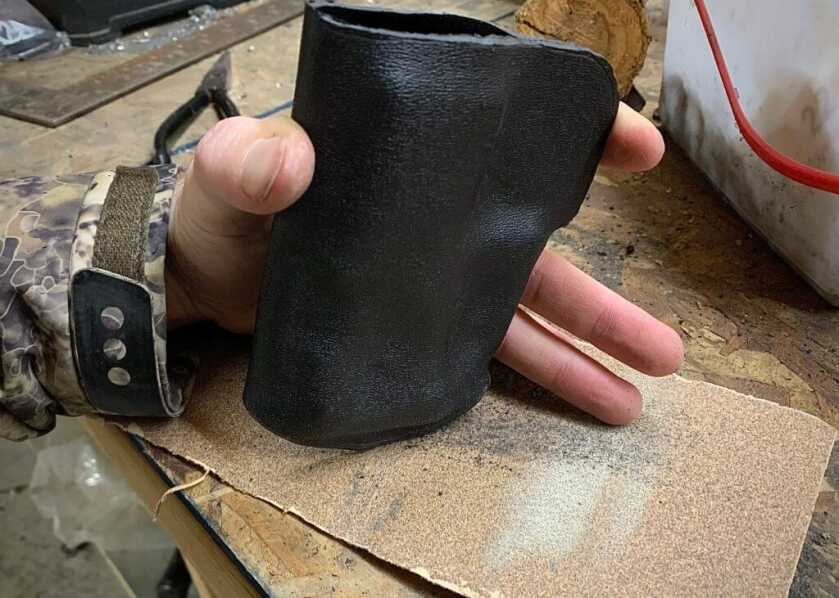
Step 6 – Attaching the hardware
Now that the holster has taken shape, add on all the goodies that you wish to have. Here, I attached a holster claw as well as a 1.75″ holster clip. I had pre-determined the location of the holster clip, so I attached it to the raised portion that I’d created with my fancy pencil spacer. All this took was a few 1/4″ holes and 2 Chicago screws. Next, I installed my holster claw. I’d previously determined its location while trimming up the holster, but now I more accurately place it for its home. You want the holster claw to be on the trigger guard side, lining up with where your belt will press against it, pushing the grip tighter to your body for better concealment. Once you find this location, mark and drill the appropriate holes. Then place two rubber washers in-between the Kydex layers so that the Chicago screws that hold the claw on will run through them. Once you have them in place, adjusting the tension of these screws will adjust the retention of the holster. To increase how tightly the holster holds your pistol, tighten the screws. Loosen the screws for the opposite effect. Your gun should more or less “click” into place.
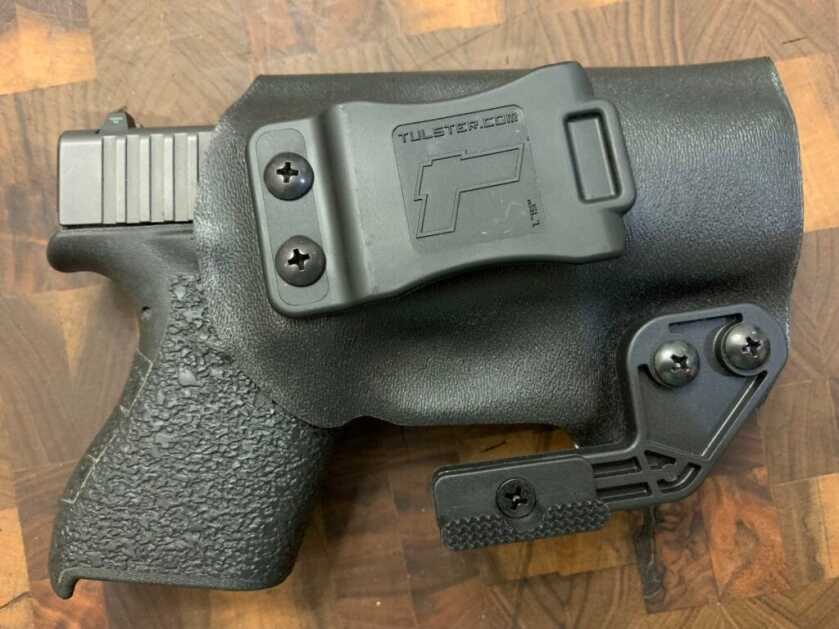

Step 6 – Go use it!
Now go out and legally (follow the laws in your state) exercise your 2nd amendment right! Protect the lives of those you love as well as your own life by always being prepared.
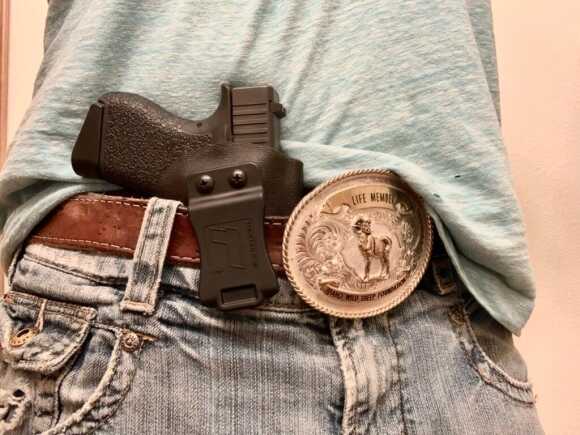


Thanks for the write-up and instructions! I might give this a try.